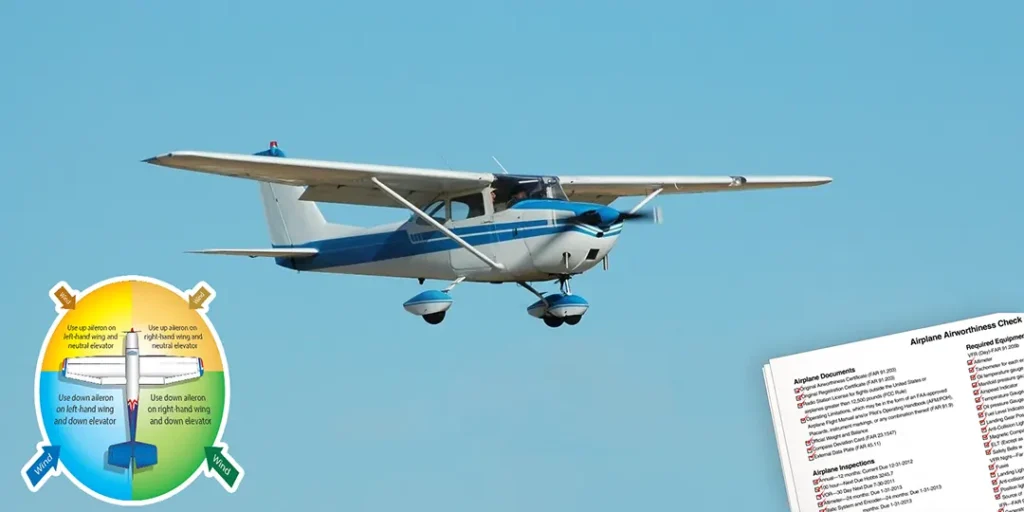
A crucial part of your aviation experience is receiving airplane flying instruction, regardless of your status as a student or a certified pilot seeking to improve your abilities. You will leave this program with the information and abilities needed to fly an airplane safely.
The Importance of Training
For those who are just beginning their aviation career as well as certified pilots who wish to further their education, training is essential. It contributes to the development of a solid foundation in aviation knowledge and abilities, guaranteeing safe and effective flight operations.
Ground school is the first phase of training for student pilots, during which they study navigation, weather patterns, aerodynamics, and aviation rules. In addition, they study aviation communication, emergency protocols, and aircraft systems. During flight school, when they are taught how to fly an aircraft under the supervision of a professional flight instructor, this theoretical knowledge is subsequently put to use.
Training is equally crucial for certificated pilots because it keeps them up to date on the most recent aviation innovations and regulations. To increase their flying capacity, they can work toward advanced ratings and endorsements like instrument or multi-engine ratings. Ongoing training also helps pilots stay current on safety procedures and enhance their ability to make decisions.
https://aircraftsystemstech.com/humix/video/UIWeIoRjlIf
Choosing a Flight School
Selecting a reliable flight school with extensive training programs is essential when thinking about airplane flying instruction. Seek out a flight school with a solid safety record, well-maintained aircraft, and certified and experienced flight instructors. Making an educated choice will be aided by your research and visits to several flying schools.
Recall that operating an aircraft is a talent that calls for ongoing education and training. Investing in airplane flying instruction can not only improve your flying skills but also guarantee safe and pleasurable flights for you and your passengers, regardless of your level of experience as a pilot.
Introduction to Flight Training
- Introduction to Flight Training
- Role of the FAA
- Role of the Pilot Examiner and the Flight Instructor
- Sources of Flight Training
- Safety Considerations and Continuing Education
Ground Operations
- Airplane Ground Operations
- Preflight Assessment of the Aircraft
- Risk and Resource Management
- Ground Operations
- Engine Starting and Hand Propping
- Taxiing
- Before Takeoff Check and Takeoff Checks
- After Landing, Clear of Runway and Stopped, Parking, Engine Shutdown and Post-Flight
Basic Flight Maneuvers
- Airplane Basic Flight Maneuvers
- Effect and Use of the Flight Controls
- Attitude Flying
- Integrated Flight Instruction
- Straight and Level Flight
- Trim Control
- Level Turns
- Climbs and Climbing Turns
- Descents and Descending Turns
- Glides
Energy Management: Mastering Altitude and Airspeed Control
- Energy Management: Mastering Altitude and Airspeed Control
- Viewing the Airplane as an Energy System
- Role of the Controls to Manage Energy State
Maintaining Aircraft Control: Upset Prevention and Recovery Training
- Maintaining Aircraft Control: Upset Prevention and Recovery Training
- Upset Prevention and Recovery
- Slow Flight
- Airplane Stalls
Takeoffs and Departure Climbs
- Takeoffs and Departure Climbs
- Prior to Takeoff
- Normal Takeoff
- Crosswind Takeoff
- Ground Effect on Takeoff
- Short-Field Takeoff and Maximum Performance Climb
- Soft/Rough-Field Takeoff and Climb
- Rejected Takeoff/Engine Failure and Noise Abatement
Ground Reference Maneuvers
- Ground Reference Maneuvers
- Maneuvering by Reference to Ground Objects
- Drift and Ground Track Control
- Rectangular Course
- Turns Around a Point
- S-Turns
- Elementary Eights
Airport Traffic Patterns
Approaches and Landings
- Approaches and Landings
- Use of Flaps
- Normal Approach and Landing
- Go-Arounds (Rejected Landings)
- Intentional Slips
- Crosswind Approach and Landing
- Turbulent Air Approach and Landing
- Short-Field Approach and Landing
- Soft-Field Approach and Landing
- Power-Off Accuracy Approaches
- Emergency Approaches and Landings (Simulated)
- Faulty Approaches and Landings
- Hydroplaning
Performance Maneuvers
Night Operations
- Night Operations
- Night Vision
- Night Illusions
- Pilot Equipment
- Airplane Equipment and Lighting
- Airport and Navigation Lighting Aids
- Training for Night Flight, Preparation and Preflight
- Starting, Taxiing, Runup, Takeoff and Climb
- Orientation and Navigation
- Approaches and Landings
- How to Prevent Landing Errors Due to Optical Illusions
Transition to Complex Airplanes
- Transition to Complex Airplanes
- Function of Flaps, Flap Effectiveness and Operational Procedures
- Controllable-Pitch Propeller
- Turbocharging
- Retractable Landing Gear
- Transition Training to Complex Airplanes
Transition to Multiengine Airplanes
- Transition to Multiengine Airplanes
- Terms and Definitions
- Operation of Systems
- Performance and Limitations
- Weight and Balance
- Ground Operation
- Normal and Crosswind Takeoff and Climb
- Short-Field Takeoff and Landing
- Level Off and Cruise
- Slow Flight and Spin Awareness and Stalls
- Normal Approach and Landing
- Crosswind Approach and Landing
- Go-Around and Rejected Takeoff
- Engine Inoperative Flight Principles
- Low Altitude Engine Failure Scenarios and Engine Failure During Flight
- Engine Inoperative Approach and Landing
- Multiengine Training Considerations
Transition to Tailwheel Airplanes
Transition to Turbopropeller-Powered Airplanes
Transition to Jet-Powered Airplanes
- Transition to Jet-Powered Airplanes
- Jet Engine Basics and Operating the Jet Engine
- Absence of Propeller Effect, Slipstream and Drag
- Speed Margins
- Mach Buffet
- Low Speed Flight
- Stalls
- Drag Devices
- Thrust Reversers
- Pilot Sensations in Jet Flying
- Jet Airplane Takeoff and Climb
- Jet Airplane Decent, Approach and Landing
- Jet Airplane Systems and Maintenance
Transition to Light Sport Airplanes
Emergency Procedures
- Airplane Emergency Procedures
- Emergency Landings
- Basic Safety Concepts
- Terrain Types
- Engine Failure After Takeoff and Emergency Descents
- In-Flight Fire
- Flight Control Malfunction/Failure
- Systems Malfunctions
- Abnormal Engine Instrument Indication
- Door Opening In-Flight
- Inadvertent VFR Flight Into IMC
- Emergency Response Systems
